




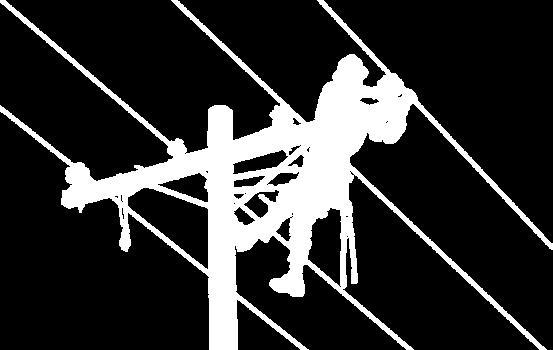
Everyone plays a part!
Thesummer season has arrived and we want to provide insight into our restoration process to ensure Inland Power members know what occurs behind the scenes during outages. The following are some key points regarding the restoration process: We need your help. When the power goes out, it might only affect your home or a small section of the neighborhood. Even though we have outage detection technology, we still encourage members to report an outage. If your power is out you can report an outage through your SmartHub account or by calling us at 509-747-7151
It takes our entire team. The entire Inland Power team is dedicated to restoring your power as quickly and safely as possible. Our member experience representatives take your calls, engineers and field staff assess damage, our vegetation management team remove hazards, dispatchers coordinate crews and communicators keep everyone informed on progress. When outages occur, we all come together to resolve the situation. We assess the situation first. Each outage is unique, and we need to determine how
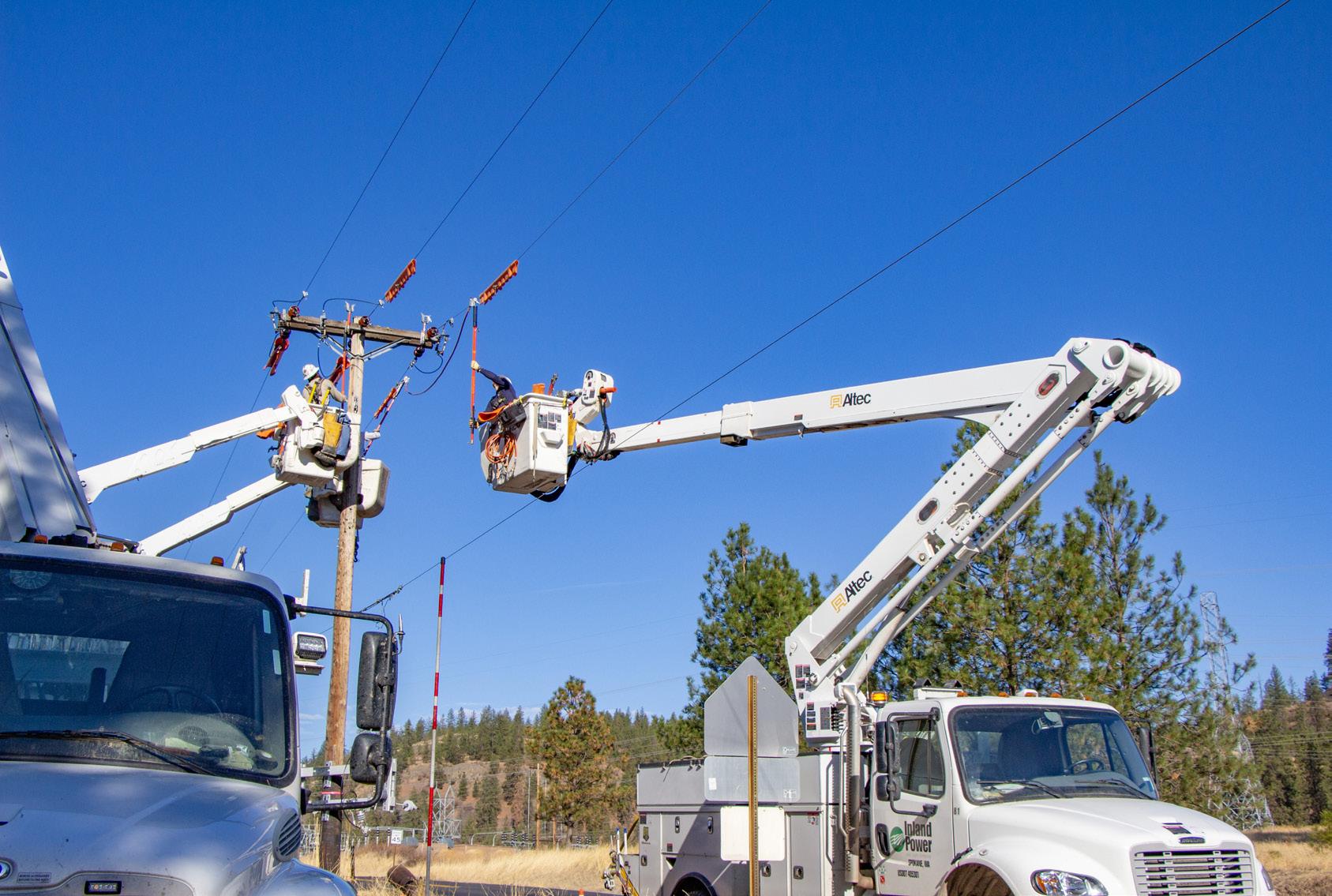
dangerous it is and what equipment may require replacement. Our initial response involves understanding what happened, identifying necessary materials and developing a plan for resolution without disrupting electric service for other members.
Restoration prioritizes the largest impact.
Our crews aim to restore power to the greatest number of members in the shortest time possible. We focus first on public safety issues and critical services, such as medical facilities, before addressing areas affecting larger groups of people.
Our employees face numerous hazards. In addition to working around high-voltage electricity, our crews remain vigilant for wild animals, unpredictable weather, falling trees and high speed vehicles.
Flickering lights indicate success. Some individuals confuse flickering lights with outages, but these “blinks” are actually positive signs. They show that our equipment functioned correctly, preventing a possible outage from stray animals or tree limbs on the lines.
Have a backup plan. We are always focused
on doing our best to help those in need. However, if you rely on electricity for lifesupport purposes, it’s crucial to have a backup plan. Please remember that we cannot always predict how long restoration efforts will take.
Our employees need breaks too. If you see our trucks in a parking lot during an outage, know that our employees sometimes gather in safe areas to strategize about restoration efforts. They also work long hours during outages and need time for meals and rest just like everyone else.
Patience might be required. Our segment of the power grid connects to other electric utilities, and we maintain positive relationships with these power providers. If an outage stems from their feed into our system, we must allow them to complete their repairs while remaining mindful of their challenges. While we strive to minimize power disruptions, they are sometimes unavoidable. Rest assured, Inland Power is working diligently and safely to restore your power.

Our mission is our members!
Spain has long been a front runner in Europe’s renewable energy transition, with solar power at the heart of its strategy. However, the events of April 28, 2025, when a massive blackout swept across the Iberian Peninsula, have exposed the vulnerabilities of a grid racing to keep up with the pace of solar expansion.
A Nation Powered by the Sun Spain’s solar photovoltaic (PV) capacity has grown exponentially, reaching over 18,000 MW by April 2025. On the day of the blackout, solar PV accounted for 53.34% of the country’s electricity generation. Combined with wind and hydro, renewables made up nearly 80% of the total generation mix. This surge is part of Spain’s broader goal to generate 81% of its electricity from renewables by 2030, with solar expected to play a leading role. The country’s favorable climate and government incentives have made it a magnet for solar investment.
The Grid’s Breaking Point
Despite these achievements, Spain’s grid infrastructure has not evolved at the same pace. The blackout on April 28 was triggered by the sudden loss of 15 GW of generation within just five seconds, representing 60% of the system’s online generation at that moment. This caused a rapid frequency drop, activating automatic protection systems and plunging the country into darkness.
Here is a breakdown of the key events and causes:
Initial Trigger: The blackout began with an abrupt loss of 2.2 GW of electricity at a substation in Granada, southern Spain.
Cascading Failures: This initial loss was followed within seconds by additional failures in Badajoz and Seville, leading to a rapid and widespread collapse of the grid.
Massive Generation Drop: In total, Spain lost approximately 15 GW of generation
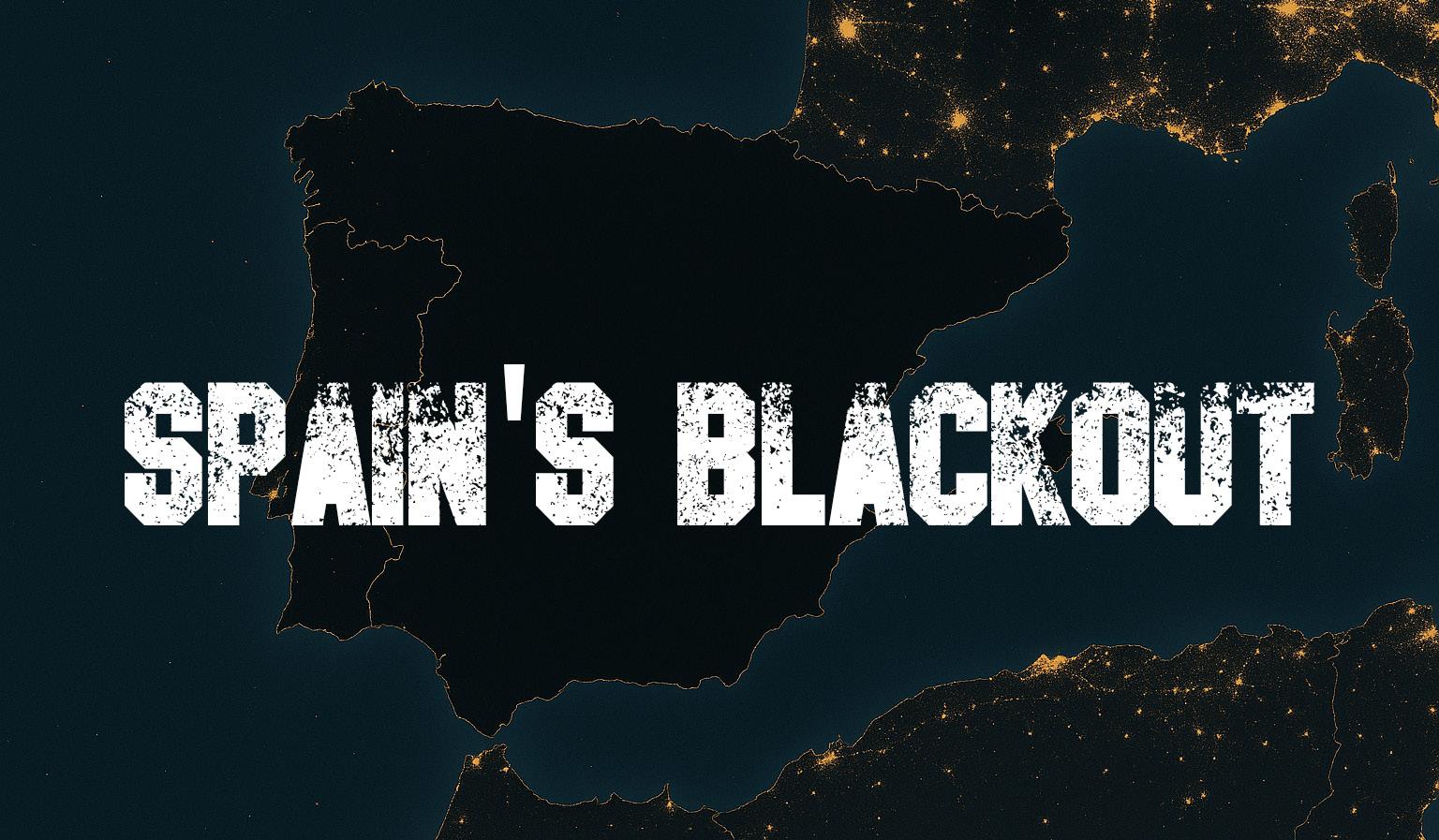
capacity in just five seconds — about 60% of its national electricity demand at the time.
High Renewable Share: At the time of the incident, renewable sources (mainly solar) made up 78% of the electricity mix, with solar alone contributing nearly 60%. Conventional sources like gas and nuclear accounted for only 22%. This meant the grid was operating with very low inertia — the ability to resist sudden changes in frequency
Intermittent-based sources like solar and wind do not provide natural inertia, unlike traditional generators such as gas, nuclear, hydro, making the system more fragile.
Grid Instability: The high reliance on renewables, which provide less “grid inertia” compared to conventional sources, made the system more vulnerable to sudden disruptions.
Contributing factors are under investigation Authorities are examining whether excessive voltage fluctuations in the days leading up to the blackout contributed to the failure.
Atmospheric Conditions: Extreme temperature variations across Spain may have played a role, according to Portuguese grid operator Redes Energéticas Nacionais (REN).
At the time of the blackout:
- Combined cycle gas turbines contributed only 4.82% of generation. - Other synchronous sources (like biomass and co-generation) played a minimal role.
This left the grid with insufficient kinetic energy reserves to buffer the shock, leading to cascading failures.
The Human and Economic Impact
The blackout affected an estimated 50 million people across Spain, Portugal and parts of France. Airports, hospitals and communication networks were disrupted. Power was not fully restored until the early hours of April 29 – approximately 23 hours later.
Aftermath
The blackout required a full “black start” — a process of restoring power from a total shutdown. External support came from Morocco (up to 900 MW) and France (up to 2 GW) to help stabilize the grid.
The failures that led to the sudden loss of 15 GW of generation in Spain on April 28, 2025, were caused by a confluence of technical and structural vulnerabilities in the power grid.
Lessons and the Road Ahead
Spain’s experience underscores a critical lesson: renewable energy expansion must be matched by grid modernization. Key areas for improvement include:
- Grid-scale energy storage to buffer fluctuations.
- Smart grid technologies for real-time demand-response.
- Enhanced interconnections with neighboring countries to share excess power and stabilize frequency.
“The recent blackouts in Spain are a stark reminder of how vulnerable centralized grids can be,” said Senator Matt Boehnke (R-Kennewick).
Spain’s solar success story is far from over, but the April 2025 blackout is a stark reminder that the transition to clean energy is not just about generation — it’s about building a resilient, flexible and intelligent grid.
Spain’s blackout serves as a cautionary tale for other nations accelerating their renewable energy transitions — especially the United States, which is also experiencing a rapid expansion of solar and wind power. In 2024, the U.S. added over 30 GW of solar capacity, and projections for 2025 suggest even greater growth.
However, like Spain, the U.S. faces challenges with:
- Aging grid infrastructure, much of which was built in the mid-20th century.
- Limited transmission capacity between regions, particularly from renewablerich areas (like the Southwest) to highdemand centers.
- Insufficient energy storage to buffer intermittent generation.
- Widespread integration of smart grid technologies.
If the U.S. does not invest in modernizing its grid — including smart grid technologies, battery storage, and flexible demand systems — it could face similar risks of instability, especially during peak solar production or extreme weather events.
“In the Pacific Northwest, we must act now to build a more resilient, distributed energy system that can withstand disruptions— whether from natural disasters, cyber threats or global instability,” Boehnke said. “Protecting our grid isn’t just about keeping the lights on—it’s about safeguarding our economy, our communities and our future.”
Spain’s experience underscores a universal truth: the clean energy transition is not just about generating more renewable power — it’s about building a grid that can handle it. It’s a valuable lesson the U.S. – particularly the west coast should take very seriously as we forge ahead into the renewable energy future.


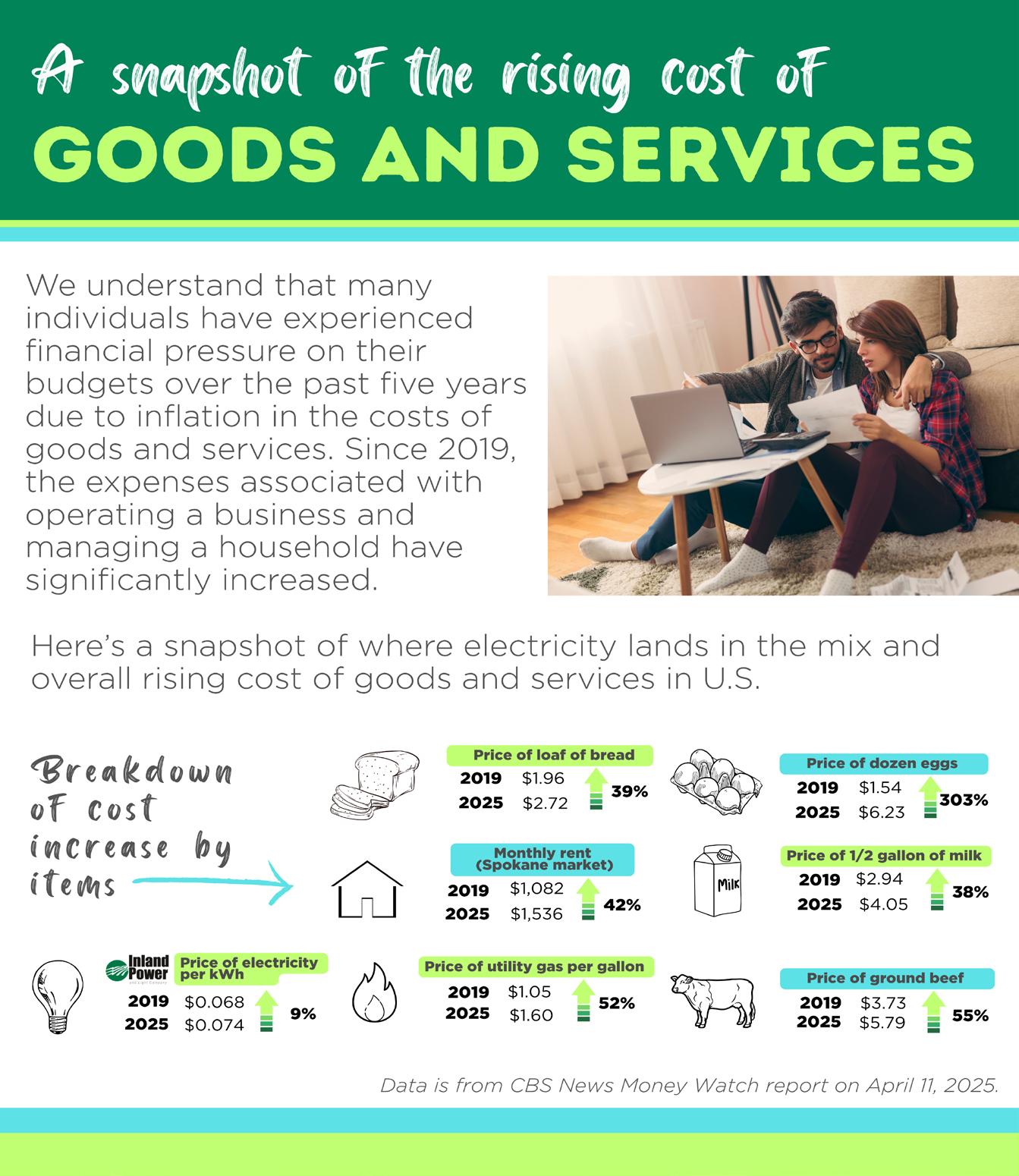
It’s time once more to share an update with our members regarding various infrastructure projects at Inland Power. We are dedicated to pinpointing areas for enhancement and improvement. We would like to take a moment to inform our members about our ongoing efforts to ensure that we deliver affordable and reliable power, along with the highest standard of service.
Three-Phase Meter Upgrades
Outdated meters are being replaced with new base units that will enhance efficiency and conform to industry standards. These advancements will also aid in better maintenance of our system.

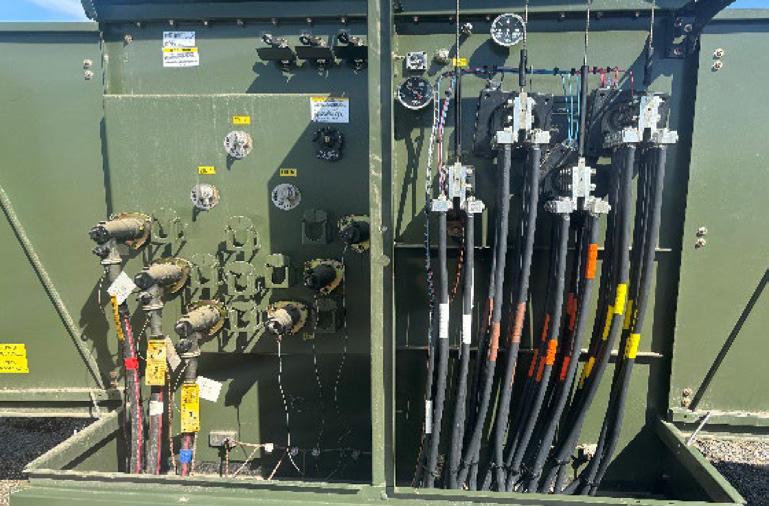
Transformers located at our Chambers Substation, near Colfax were recently installed. All wiring, connections and conduit were replaced. These upgrades are crucial steps aimed at enhancing reliability for our members in the region.
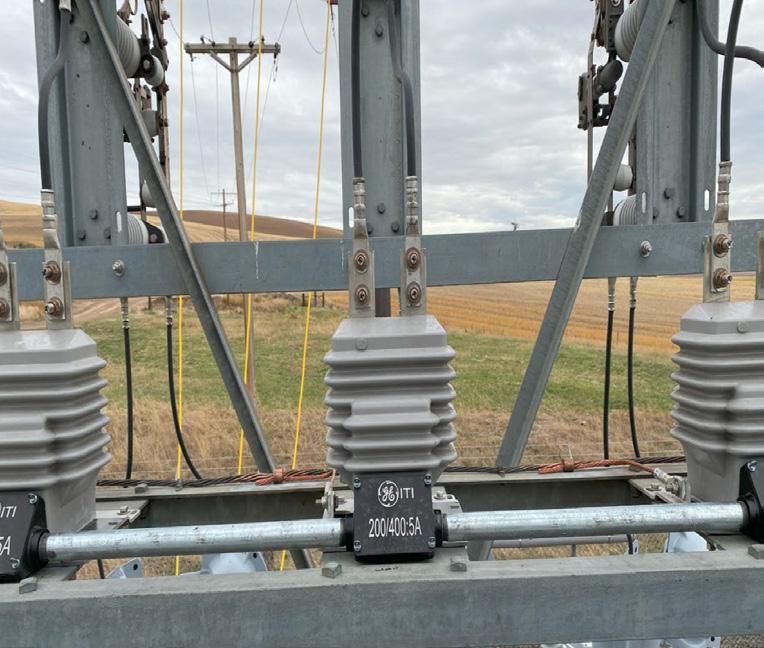

Since the beginning of the year, Inland Power’s Vegetation Management team has successfully removed more than 440 hazardous trees, 200 declining trees and completed over 2,000 side prunes from trees located outside of the right-of-ways but growing within them. Additionally, crews have completed the Oregon Road Fire / FEMA clean-up project in North Spokane County, which involved the removal of 7,200 burnt trees.
As we move forward in 2025, we are making significant progress on numerous other projects and will keep our valued members informed about our advancements.






